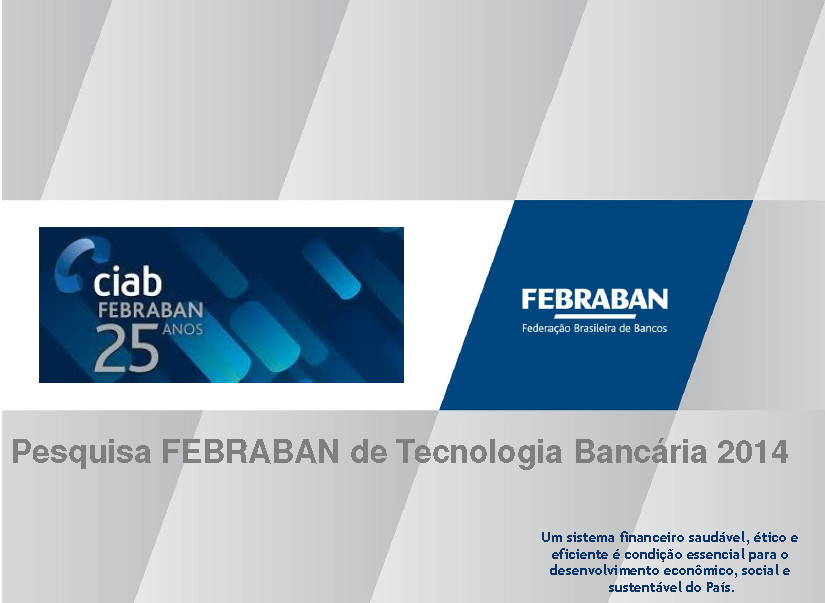
Digital media consolidate in banking transactions
In mobile banking, there was a significant growth in the volume of financial transactions in 2014 when compared to the previous year. Transfers, DOCs, TEDs and bill payments increased by 180%, totaling 260 million transactions. Another highlight was the contracting of credit, which registered an increase of 190% and reached 10 million transactions.
In relation to internet banking, the survey pointed to a growth of 8% in the number of transfers, DOCs and TEDs and of 11% in the payment of bills. Together, these services amount to more than 1.5 billion transactions. The contracting of credit through this means also increased by 201TP2Q, totaling 40 million.
Even with the high percentages of increase, there is still a lot of potential to be explored, as internet and mobile account for 20% of the volume of operations with financial transactions. “The consolidation of the use of digital channels is the result of a very large investment by the industry to guarantee a safe environment and offer increasingly friendly interfaces, thus improving the customer experience, while reflecting the current moment experienced by Brazil, in which the improvement of internet access and the high penetration of smartphones, which should reach 41% in seven years, also allow users to have an adequate infrastructure to use these means”, explains Gustavo Fosse, Sector Director of Banking Technology at Febraban .
Role of agencies
Even with the use of different channels to carry out transactions, bank branches continue to be important in the new context. “Agencies, in fact, gain a new role in the current scenario and become more consultative. Many clients look to their managers to learn more about new investment opportunities and services that can be hired, based on their profiles”, highlights Fosse.
This trend is reinforced by the growing number of bank branches across the country, especially in the North and Northeast regions, which maintained an increase above 5%, twice the national average.
The Southeast, South and Midwest regions have similar penetration levels per branch, around 25 to 30 branches for every 100,000 people in the Economically Active Population (EAP).
investments
The study also revealed that in 2014, technology expenditures and investments by banks amounted to R$ 21.5 billion. Investments continue to grow above the inflation rate (11% per year). Financial institutions' IT expenditures represent 18% of all industries in the country last year and are on par with countries such as the United States and France.
Last year, software development presented the biggest increase in investment volume (16%), followed by hardware (6%), telecom (2%) and others (1%). This move reinforces the banks' concern with the provision of service and with the customer experience to offer more efficiency and convenience in their service channels.
“The challenge for the sector is to plan this investment properly, balancing efficiency and consumer experience through an integrated platform of channels and offers to customers”, adds the executive.
The search
Conducted 23 years ago in 2014, this edition of the survey was carried out in partnership with Strategy&. “This year, the study will show some important aspects such as the user experience, the evolution of channels, big data and security, themes that will also be highlighted in the 25th edition of Ciab Febraban”, says the executive.
To carry out the research, 95% of the banking sector related to the total number of branches was consulted, which represents more than 90% of the sector's total assets, equivalent to 20 of the most representative financial institutions operating in Brazil. In addition, it was complemented with data from other associations and governmental bodies, including international ones, to incorporate important issues in order to expand and deepen the analysis of the data.
To see the full report click here.












